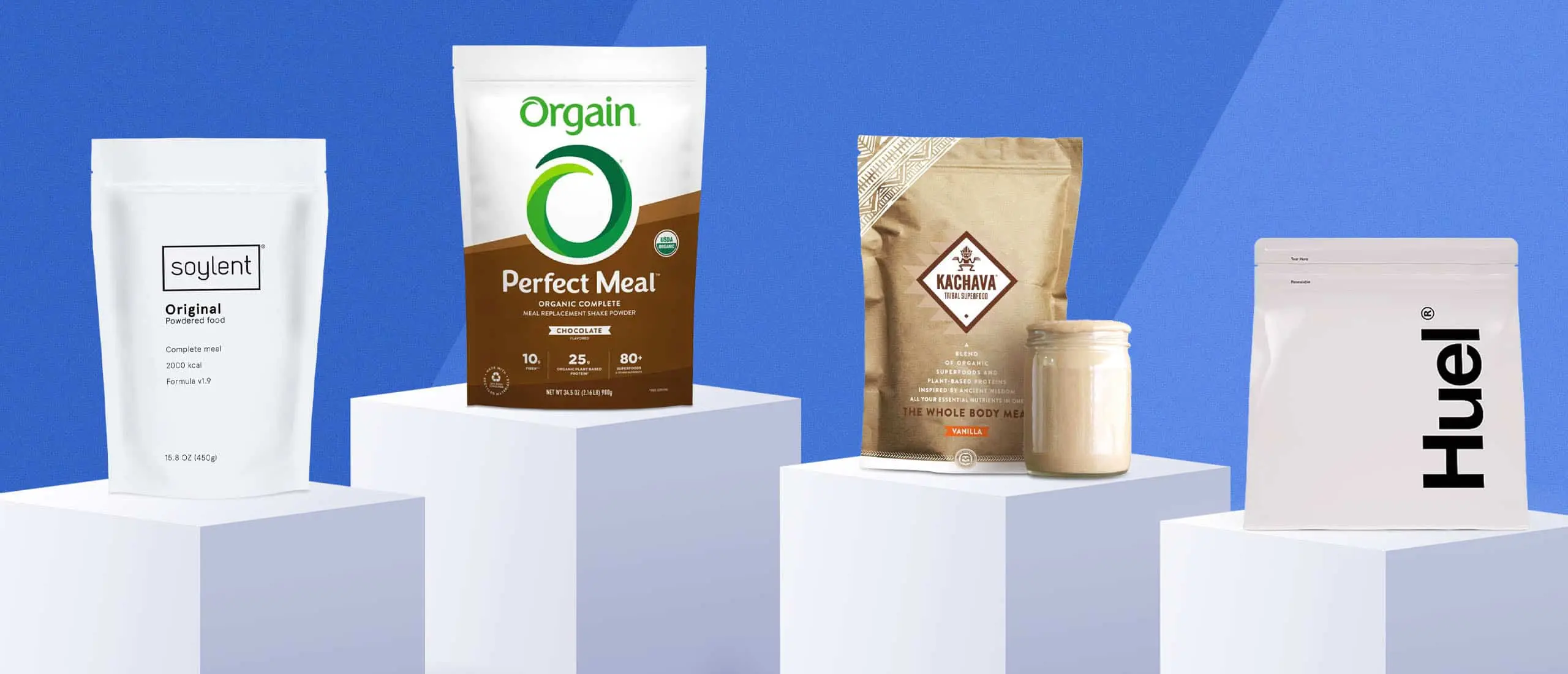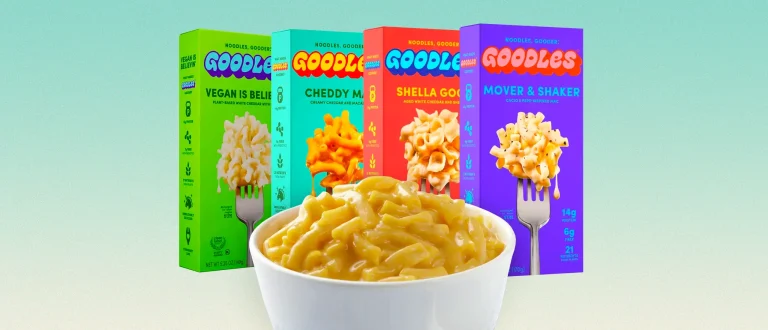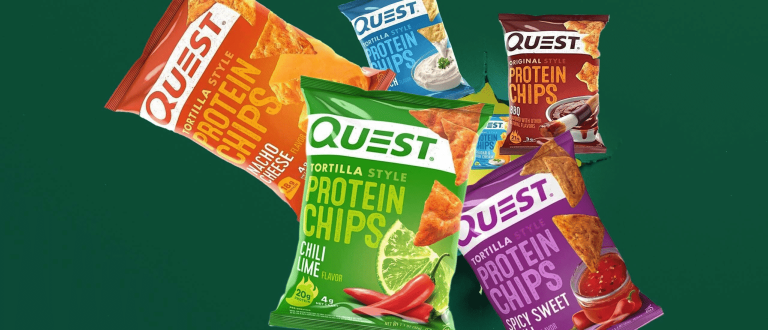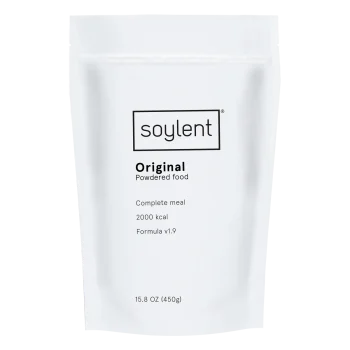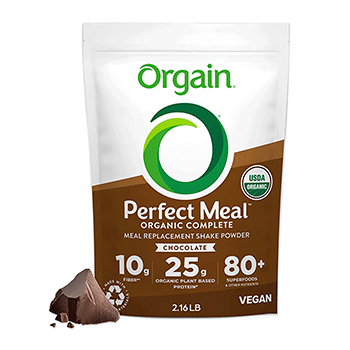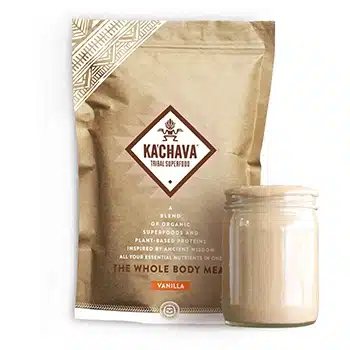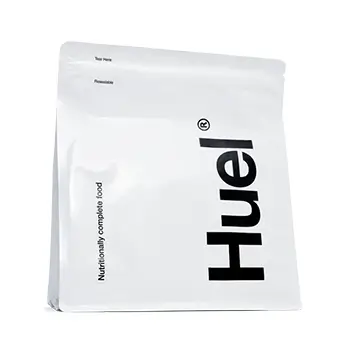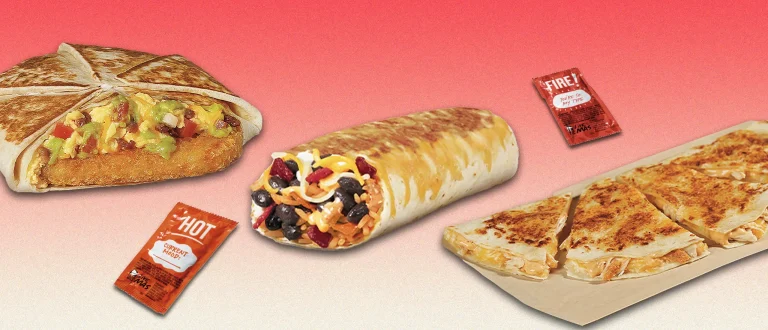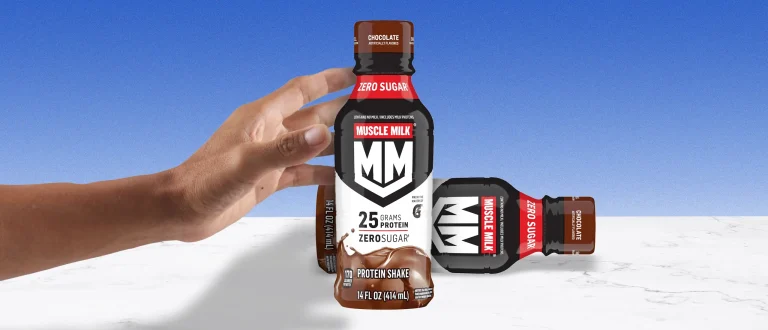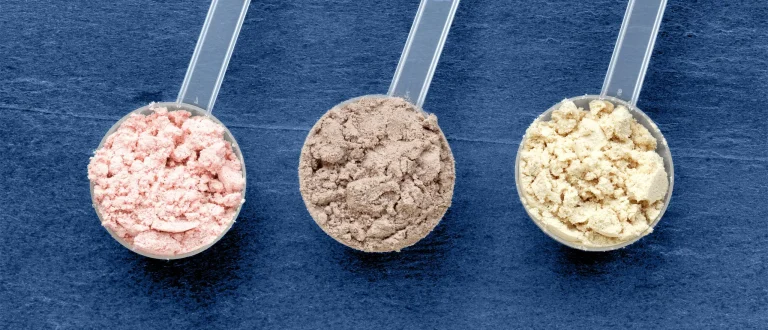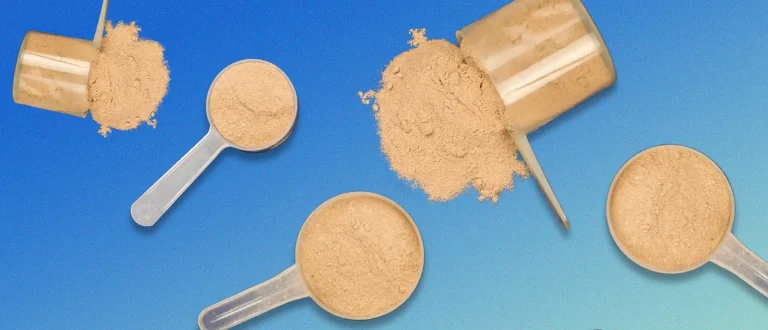Our product recommendations are selected by editors, tested first-hand, or expert-approved. We may earn a commission through links on our site.
The time is 11:45 a.m. You have a meeting at noon, followed by a dentist’s appointment to get a filling. Your nephew is FaceTiming you for the sixth time in the last half hour. You would like to go to the gym today (you won’t). Your stomach rumbles.
Scenarios similar to the above (read: my own) aren’t all that rare, and more often than not lead to missed meals. And while we bear no ill will with considered and intentional meal-skipping, depending on your lifestyle, accidentally missed meals can lead to a lack of energy, binge eating, and other emergent problems. Thus, the meal replacement shake.
Think of MRE shakes as protein powders but for all the macronutrients and some of the micronutrients, too. They’re almost always powders mixed with 8 to 12 ounces of water, and most are between 250 and 500 calories per “meal.”
As Americans have become busier and busier, our interest in such products has grown. Who could’ve known a meal that can be prepared in 30 seconds or less is appealing? Ultimately, though, many meal replacement shakes are very same-same, so we thought we ought to test several of the most popular options and share the best ones. These are the best meal replacement shakes you can buy.
- Best Overall Meal Replacement Shake: Soylent Original($1.99/meal)
- Best Tasting Meal Replacement Shake: Orgain Perfect Meal ($4.28/meal)
- Best Meal Replacement Shake for Vitamins: Ka’Chava Meal Replacement Shake ($4.67/meal)
What Are the Benefits of Meal Replacement Shakes?
Meal replacement shakes are a proven weight loss tool. Everyone’s weight loss journey is different, but most research suggests making use of meal replacement shakes makes sense for weight loss (1), especially when used with guidance from a medical professional. But even used as a part of a weight loss strategy without guidance, it’s not hard to see why they work—meal replacement shakes are nutrient dense, fiber-rich, but not too heavy on calories. Basically, they’re designed to make you feel full without overeating.
What Are the Downsides of Meal Replacement Shakes?
For one, meal replacement shakes are not whole foods. Eating whole foods gives you more control over what goes in your body—AKA you’re not overeating artificial ingredients like you will if you lean on meal replacement shakes for an extended period. It’s also difficult to ascertain the quality of ingredients inside most meal replacement shakes, as the brands are not required to provide any third-party testing information. Finally, most meal replacement shakes are going to be high in sugar or artificial sweeteners to make the nutrient load more palatable. This isn’t inherently bad, but worth knowing before buying a costly new product.
What We Look for in Meal Replacement Shake Powders
Calculating value
There’s a lot to take in with meal replacement shakes, but fundamentally it’s a product category like any other: it’s only worth if for the right price.
The simplest and we think best way to calculate value is on a cost per serving basis—the total cost divided by the number of servings per delivery. To that end, you’ll find that 99 percent of meal replacement shake powders offer significant savings on any traditional meal, though typically won’t hold you over for quite as long as a balanced meal might. You can expect to pay between $2 and $5 a meal when shopping for MRE shakes, with most options sitting right at $4 per. If you’re spending over that number, it should be for a specialized product of some kind (one that adheres to a food allergy, includes added supplements, etc.)
How many calories
Calorie load is another aspect of value, yes, but it’s a factor to consider independently as well. Meal replacement shakes come in a wide range of calories per serving—typically anywhere from 250 to 550. Consider your goals and take a long, hard look at the nutrition label before making the call to buy one over another.
Taste & texture
To be blunt, we tried a lot of meal replacement shakes and many were unpleasant. Without writing a dissertation on solubility, let’s just say texture is the most common source of a less-than-stellar MRE shake. Some are grainy no matter how hard you shake them, some clump up far too easily, and some are able resist the blades of even the most powerful blenders to maintain their sandy quality. After testing, we reckon at least one in three MRE powders could be described as suspect regarding texture.
Taste is another matter. Most are serviceable, but we recommend keeping it simple as a matter of course. Your chocolates, your vanillas, and your strawberries are more consistently palatable than sour birthday cake funfetti flavor.
Goals, goals, goals
No one MRE shake is fit for all people. Our top pick, Soylent’s Original blend, included. Gander at nutritional labels of a few brands and you’ll find some high-calorie protein bombs while others more closely resemble a traditional meal in their macronutrient makeup. The lesson is simple: don’t just take our word (or anyone else’s) for it. Finding the right product for your diet and lifestyle is absolutely necessary.
Identifiable ingredients
This one is simple: if there are ingredients that you don’t recognize (and can’t easily understand after a quick Google), approach with caution. Most companies in the nutrition and wellness space act responsibly and reasonably, but if you dig deep enough you’ll find products with an ingredient list that reads like something from a sci-fi novel. Know what you’re eating (or drinking, in this case).
Healthy cheating
How We Tested Meal Replacement Shakes
No meal replacement shake we will recommend in this guide is here based on reputation—we’ve tested and reviewed every one. Getting what you want and need out of your diet are our two guiding principles throughout every review. Does the shake’s macronutrient makeup make sense? Does the powder taste like aspartame? Are there ingredients in the powder that shouldn’t be? Regardless of brand size or rep, we ask ourselves these same questions (and many more). Have an MRE shake you’re curious about? Email this guide’s editor, Will Price, and we’ll try it out.
No meal replacement shake we will recommend in this guide is here based on reputation—we’ve tested and reviewed every one. Getting what you want and need out of your diet are our two guiding principles throughout every review. Does the shake’s macronutrient makeup make sense? Does the powder taste like aspartame? Are there ingredients in the powder that shouldn’t be? Regardless of brand size or rep, we ask ourselves these same questions (and many more). Have an MRE shake you’re curious about? Email this guide’s editor, Will Price, and we’ll try it out.
The Best Meal Replacement Shakes
Best Overall Soylent Original
READ THE FULL REVIEW: Soylent is probably the most widely known meal replacement shake brand and, to the surprise of our testing team, is probably the best one for the most people.
Firstly, it presents an oddly good value. At $2 a meal, it is half the price of the other meal replacement shakes we recommend. Its only competition in the pricing world comes from shadier brands with far less scrutiny.
It should be noted that the $2 a meal figure assumes you’ll be eating the “standard” Soylent meal, which you’ll find nutritional info for below. Many customers, including myself, opt for the larger portion serving, which is essentially 50 percent more of everything (400 calories, 20g protein, 42g carbs, 19g fat) and brings the per serving cost from $2 to $3—which is still an excellent value.
Soylent Original isn’t the absolute best tasting option we reviewed—it has a kind of pancake batter-like flavor—but there’s not gnarly aftertaste and it shakes up in a water bottle very consistently. It’s also easy to blend up in a protein shake for an added calorie boon.
Cost per meal: $2
Calories: 270
Protein: 13g
Carbs: 28g
Fat: 13g
- Solid value
- Full feeling
- Mixes well
- Taste
- Soy, soy, soy
Best Tasting Meal Replacement Shake: Orgain Perfect Meal Complete
READ THE FULL REVIEW: I won’t bother to speculate as to why, but there are a lot of wishy-washy brands in the powdered MRE market. Orgain is the opposite of a wishy-washy brand. Orgain has been in the supplement world since 2009, which is practically geriatric for the industry, and its Perfect Meal MRE shake doesn’t disappoint.
The consensus among our review team is that the drinking experience was the best of the products reviewed. It dissolves into a water bottle well, tastes like a slightly watery glass of chocolate milk, and doesn’t leave any funky aftertaste. It’s also vegan, gluten-free, and organic, and keeps you full for hours.
From a nutrition perspective, it leans a little more on protein than most in the category—25g per serving—and manages to keep the sugar totals low as well. We also like that there are a ton of non-macronutrient bonuses slipped in, like ashwagandha, lion’s mane, cordyceps, reishi, and chaga.
The price per meal is $4.28, which is just above average for the category but dramatically higher than our top pick, Soylent Original. We think Soylent is probably the better bet for most people, but if you’re trying to hit big protein numbers every day or you have a soy sensitivity, Orgain’s MRE is an excellent alternative.
Cost per meal: $4.28
Calories: 250
Protein: 25g
Carbs: 30g
Fat: 8g
- Quick and efficient way to refuel on the go
- No chalky after-taste
- Satisfies for hours
- Vegan, gluten-free, and organic
- Easy way to increase protein and vitamin intake
- Slightly over-priced
- Only two flavors (chocolate and vanilla)
- Overkill for those that already take supplements
Best Meal Replacement Shake for Vitamins: Ka'Chava Meal Replacement Shake
READ THE FULL REVIEW: At 6g of sugar per serving, Ka’Chava manages the lowest sugar level of our recommended MRE shakes while still tasting pretty good. And, unlike most products in this space, there are a number of flavors that are generally solid (we often find the more adventurous flavors to be off-putting).
But the star of the show here is the micronutrient, vitamins, and minerals Ka’Chava wedged into its shake. There is an entire grocery store’s produce section crammed into each serving, to go along with an adaptogen stack that’d make Michael Pollan jealous. There are even probiotics in there, to say nothing of its vitamin rap sheet.
Now, if you’re already taking supplements to cover these areas, you may find better value with Orgain or Soylent, but it’s a great option for those who aren’t.
Our main problem with Ka’Chava is simple: the recommended amount of water isn’t near enough for the shake to blend well. Ignore the 12-14 oz. recommendation and go with 16-20, says our reviewer.
Cost per meal: $4.67
Calories: 240
Protein: 25g
Carbs: 24g
Fat: 7g
- Great taste without an overload of sugar
- Nice array of flavors like Vanilla, Matcha, and Coconut Acai
- Packed with tons of ingredients (85+) and blends (7)
- Doesn’t mix well with the recommended 12-14 ounces of water
- 15 servings is light for $70 a bag
- At least 16 ounces of water required to avoid clumping
Meal Replacement Shakes We Don’t Recommend
Huel Powder v3.0
READ THE FULL REVIEW: Things look very good for Huel from 10,000 feet. The cost per meal is a very reasonable $2.21 or thereabouts, and the calorie count and macronutrient figures are solid. They even send you a shaker bottle and T-shirt with your first order.
But our reviewer couldn’t get past the drinking part. It’s very clumpy and the taste isn’t all that pleasant either. Our reviewer noted that Huel doesn’t really mix well at all with water which is a serious issue. These reasons alone are enough not to recommend it, but we also find it a bit off-putting that new orders must be a minimum of two bags.
Cost per meal: $2.21
Calories: 400
Protein: 30g
Carbs: 45g
Fat: 13g
- Quick and efficient way to refuel
- Wide variety of flavors
- More affordable than other popular meal replacement drinks
- Comes with a blender bottle
- Doesn’t mix well with water
- It tastes like uncooked oats
- You have to buy a minimum of two bags per order

